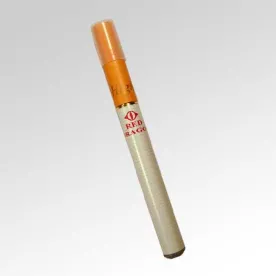Following a series of actions over the last several months, on November 15, 2018, the U.S. Food and Drug Administration (“FDA”) announced new steps aimed at protecting youth from tobacco, including, among other things, preventing access to flavored electronic nicotine delivery system (“ENDS”) sold in certain retail locations, and potentially banning menthol in combustible tobacco products.[1] Spurred by the release of new data from the 2018 National Youth Tobacco Survey (“NYTS”) showing a rise in e-cigarette use among youth over the past year, FDA Commissioner Scott Gottlieb, M.D., announced a number of steps to prevent youth access to, and use of, tobacco products, including: (i) directing the Center for Tobacco Products (“CTP”) to revisit FDA’s premarket review compliance policy for flavored ENDS, other than tobacco, mint and menthol flavors, sold in retail outlets that are not adult (18+) only; (ii) directing CTP to publish additional information regarding best practices for age-restricting online sales; (iii) issuing a Proposed Rulemaking that would seek to ban menthol in combustible tobacco products, including cigarettes and cigars; (iv) issuing a Proposed Rulemaking to ban, through appropriate means, all flavors in cigars; and (v) advancing a policy that aggressively pursues the removal of ENDS products that appear to too kid-friendly.
National Youth Tobacco Survey Data
On November 15, 2018, the FDA and the U.S. Centers for Disease Control and Prevention (“CDC”) released new findings from the 2018 National Youth Tobacco Survey showing that more than 3.6 million middle and high school students were “current e-cigarette users” – defined as having used e-cigarettes once in the past thirty days – in 2018, which FDA described as a “dramatic increase of more than 1.5 million students since last year.”[2] As background, the NYTS “is a cross-sectional, voluntary, school-based, self-administered, pencil-and-paper survey of U.S. middle and high school students.”[3]
According to the FDA news release, “the number of U.S. high school students who reported being current e-cigarette users increased 78 percent between 2017 and 2018 to 3.05 million (or 20.8 percent).”[4] Further, “among middle school students, numbers rose 48 percent [from the previous year] to 570,000 (or 4.9 percent) [of total middle school students].” What is more, the NYTS data showed that high school students who reported being current e-cigarette users reported using these products more frequently. Indeed, “[i]n the last year, the proportion of those [high school students] using the product more regularly (on 20 or more of the past 30 days) increased from 20 percent to 27.7 percent[.]”[5] The study authors suggest that rising e-cigarette use in the last year is likely attributable “to the recent popularity of certain types of e-cigarettes, such as JUUL,” noting that these and similar products “have a high nicotine content and come in appealing fruit and candy flavors.”[6]
In his statement, FDA Commissioner Scott Gottlieb, M.D. explained that “[w]e still believe that non-combustible forms of nicotine delivery, such as e-cigarettes, may be less harmful alternatives for currently addicted adult smokers who still seek nicotine[,]” but clarified that “FDA will not allow” the opportunity presented by e-cigarettes “to come at the expense of addicting a whole new generation of kids to nicotine.”[7] CDC Director, Robert R. Redfield, M.D., echoed these concerns stating that “[t]he markedly accelerating rate of e-cigarette use among U.S. youth within the past year is a cause for grave concern” and noting that it is “critical that we implement proven strategies to protect our Nation’s youth from this preventable health risk.”[8]
FDA Announces New Policy Framework to Combat Rising Youth Use of Tobacco Products, Including ENDS
In response to the NYTS data, FDA announced a new policy framework designed to address rising youth use of tobacco products, including ENDS.
Limiting Sales of Flavored ENDS (Other Than Tobacco, Mint and Menthol) to Adults-Only Retailers
First, FDA announced that all flavored ENDS products (other than tobacco, mint, and menthol flavors, or non-flavored products) will be required to be sold in age-restricted, in-person locations, or else potentially be subjected to a revised Premarket Tobacco Product Application (“PMTA”) deadline. This policy revision would apply to all ENDS products, including e-liquids, cartridge-based systems and cigalikes, in flavors except tobacco, mint, and menthol, sold in physical locations where people under age 18 are permitted.[9] This policy revision would not apply to ENDS products sold exclusively in age-restricted locations (e.g., a stand-alone tobacco retailer (such as a vape shop)) that adequately prevent persons under age 18 from entering the store at any time; or, a section of an establishment that adequately prevents entry of persons under age 18 and prevents persons under age 18 from viewing or accessing flavored ENDS products.[10] As noted, this policy revision does not apply to ENDS products with tobacco, mint, or menthol flavors, as well as to non-flavored ENDS products, sold in any location.
In other words, vape shops that restrict access to adults (18+) only will be able to continue to sell a wide variety of flavored e-liquids/ENDS. ENDS products sold in locations that are not adults-only, however, will be limited to only tobacco, mint and menthol flavored products; other flavors (e.g., cherry, vanilla, crème, tropical, melon, etc.) sold in such locations, while not “banned” per se, will be subject to a revised compliance policy that could move the PMTA deadline earlier than the current August 8, 2022 deadline for ENDS products on the market as of August 8, 2016.
The Commissioner also noted that FDA plans to continue to aggressively pursue removing ENDS products marketed to children and/or appealing to youth from the market. These marketing practices may include “using popular children’s cartoon or animated characters” or “names of products favored by kids like brands of candy or soda.”[11]
Heightened Age Verification for Online Sales
Second, FDA announced that it would seek to curtail the sale of flavored ENDS products (other than tobacco, mint and menthol) that are sold online without “heightened age verification” processes. To advance this goal, FDA plans to identify and publish a list of best practices for online retailers.
Earlier this week, in addition to promising to cease selling flavored products (other than tobacco, mint and menthol) in all brick-and-mortar retailers, JUUL announced its own comprehensive online age-verification process:
Flavored Cigars and Menthol Cigarettes
Third, FDA announced that flavored cigars will no longer be subject to the extended compliance date for premarket authorization (which currently sets the premarket application deadline for cigars on the market on August 8, 2016 to be August 8, 2021). However, this policy does not apply to the entire product category, as certain flavored cigars are considered “grandfathered” and exempt from premarket review if they were on the market as of February 15, 2007.[12] To address this gap in regulatory authority, FDA plans to propose a product standard that would ban all flavored cigars.
Fourth, FDA announced plans to publish a Proposed Rule in the Federal Register that would seek to ban menthol in combustible tobacco products, including cigarettes and cigars.
Implications for the ENDS Product Category
FDA’s approach to addressing rising youth use of certain flavored (e.g., non-tobacco, mint, and menthol flavored) cartridge-based e-cigarette products may be effective, but is also potentially subject to legal challenge. Section 906(d)(3) of the Tobacco Control Act expressly states that “no restrictions under [906(d)(1)] may — (i) prohibit the sale of any tobacco product in face-to-face transactions by a specific category of retail outlets.” Nevertheless, a prohibition on the sale of flavored ENDS at retail outlets (e.g., convenience stores) appears to be precisely what FDA plan to accomplish, albeit through indirect means.
In particular, FDA’s announcement is framed as a withdrawal of an “enforcement discretion” policy, previously applicable to certain flavored ENDS products. Arguably, the practical effect of this compliance policy revision is a prohibition on the sale of a tobacco product in face-to-face transactions by a specific category of retail outlets (e.g., generally accessible convenience stores). That said, FDA will likely argue that it is simply reverting to the state of the law at the time of the Deeming Rule. Further, FDA is likely to justify its policy by noting that it expressly allows sales of flavored ENDS products at all retail outlets, provided that the retail outlet has an “adults-only” section where flavored ENDS products are not visible to youth who may otherwise be in the store. This action aligns with the requirements currently applicable to the distribution of samples of smokeless tobacco products in “qualified adult[s]-only” facilities.[13]
In any case, only time will tell whether FDA’s actions to address the rise in youth use of tobacco products, including flavored ENDS products, will be effective at curtailing youth access. In the interim, e-liquid manufacturers will increasingly rely on specialty tobacco product retailers (e.g., “vape shops”) and age-verified online channels to distribute their products to adults.
[1] U.S. Food & Drug Admin., FDA Statement, Statement From FDA Commissioner Scott Gottlieb, M.D., on Proposed New Steps to Protect Youth by Preventing Access to Flavored Tobacco Products and Banning Menthol in Cigarettes (Nov. 15, 2018) (hereinafter, the “FDA Nov. 15, 2018 Statement”), https://www.fda.gov/NewsEvents/Newsroom/PressAnnouncements/UCM625884.htm?utm_campaign=111518_Statement_FDA%20Commissioner%20statement%20on%20proposals%20to%20address%20youth%20tobacco%20use&utm_medium=email&utm_source=Eloqua.
[2] U.S. Food & Drug Admin., FDA News Release, Results from 2018 National Youth Tobacco Survey Show Dramatic Increase in E-Cigarette Use Among Youth Over Past Year (Nov. 15, 2018), https://www.fda.gov/NewsEvents/Newsroom/PressAnnouncements/ucm625917.htm?utm_campaign=111518_PR_New%20federal%20findings%20show%20dramatic%20increase%20in%20youth%20e-cigarette%20use&utm_medium=email&utm_source=Eloqua.
[3] Id., supra n.2.
[4] Id.
[5] Id.
[6] Id.
[7] Id.
[8] Id.
[9] FDA Nov. 15, 2018 Statement, supra n.1.
[10] Id.
[11] FDA Nov. 15, 2018 Statement, supra n.1.
[12] Family Smoking Prevention and Tobacco Control Act, Pub. L. 111-31, 123 Stat. 1776 (June 22, 2009) (hereinafter, the “Tobacco Control Act”), at § 910(a)(1)(A) (defining a new tobacco product” as “any tobacco product (including those products in test markets) that was not commercially marketed in the United States as of February 15, 2007”).
[13] Tobacco Control Act, supra n.11, at § 102(d)(2)(A).




 />i
/>i
